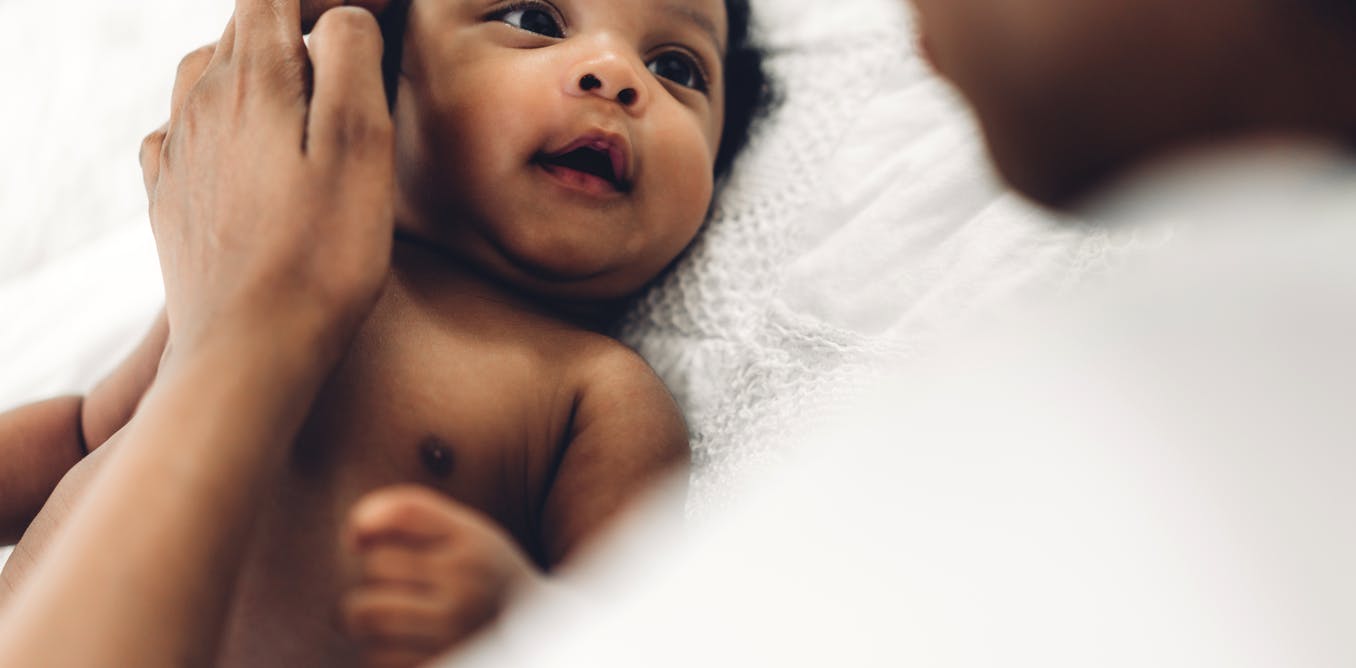How South Africa is integrating COVID into routine care for mothers and babies

COVID-19 has had a direct impact on maternal mortality.
Pregnant women are not at an increased risk of becoming infected with SARS-CoV-2. But data show they are at higher risk of severe COVID-19 disease. This is especially the case in the last 12 weeks of pregnancy, and this is still the case two years into the pandemic.
In South Africa, this risk equated to an additional 16 COVID-19-related maternal deaths per 100,000 live births, compared to maternal deaths in uninfected women. This mortality rate is similar to that of disorders related to high blood pressure in pregnancy. As in other populations, pregnant women with high blood pressure, diabetes and obesity are at higher risk of severe COVID-19.
The indirect effects of the pandemic have been equally devastating.
The onset of the COVID-19 pandemic was marked by widespread fear and uncertainty. Worried about getting infected, people were reluctant to visit healthcare facilities. As a result, the use of routine but critical services declined. These services include family planning, antenatal and postnatal care, childhood immunisations, growth monitoring and nutrition services, and other care for sick and malnourished children.
Between February and April 2020 family planning rates dropped by around 35% and immunisation coverage by around 25%. The health system was significantly hindered due to staff being sick, isolated, quarantined, redeployed or suffering from burnout or other mental health issues.
Gains that had been made in some key areas of maternal and newborn health before the pandemic also suffered. Women were not allowed to have birth companions present at the time of delivery. Kangaroo mother care for premature babies was halted in some settings. And some mothers were separated from their newborns due to COVID-19 rules and restrictions. The narrow focus on COVID-19 also set back many other health programmes, including HIV and TB care.
Two years down the line, South Africa has reached what many believe to be a turning point in the pandemic. Around 80% of the population has immunity, whether by previous infection or vaccination or a combination thereof. In addition, most of the COVID-related restrictions have been removed.
Mitigating current COVID-19 risks, while minimising indirect harm, requires careful risk-benefit analysis and clear and practical guidance. It’s in this light that the National Department of Health has published new guidelines for the care of mothers and newborns in the context of the ever-present threat of COVID-19. The guidelines incorporate new scientific and operational evidence. The aim is to ensure that clinical care for mothers, babies and children during the pandemic remains relevant, practical and evidence-based.
Back to basics
The main themes are the integration of COVID-19 care into routine maternal and childcare services, non-separation of mother-baby pairs (as a rule rather than the exception), vaccination against COVID-19 (as applicable), non-pharmaceutical interventions for infection prevention and control, respectful maternity care, and support for maternal and healthcare workers’ mental health.
Separation of the mother-infant pair negatively affects breastfeeding, bonding, and kangaroo mother care. Kangaroo mother care is a method of caring for preterm infants which involves the infants being carried, usually by the mother, with skin-to-skin contact. The practice was stopped in some settings to prevent COVID-19 infections and outbreaks. The new guidelines focus on enabling a mother to breastfeed her infant and practise skin-to-skin contact, even in the context of COVID-19 infection and even if the baby requires admission to the neonatal unit.
COVID-19 vaccination has been shown to protect mothers from severe disease and death. The guidelines recommend that vaccination be provided as part of routine antenatal care to all pregnant women, their partners and planned birth companions. They can choose to opt out.
Vaccination also provides antibody protection to the newborn baby. And it minimises risks should mothers or caregivers need to be accommodated in wards or hospital lodger facilities.
Non-pharmaceutical interventions (including mask-wearing, social distancing, handwashing and improved ventilation) remain the mainstay of infection prevention and control. These interventions will protect healthcare workers, pregnant women, their newborns and their partners. Care can be provided safely while still allowing birth companions to participate in the memorable experience of childbirth and mothers to breastfeed and bond with their infants.
The heightened awareness of non-pharmaceutical interventions is likely to have a positive spinoff on the transmission of other common conditions such as TB, respiratory syncytial virus and other hospital-acquired infections.
Healthcare workers and pregnant women are at higher risk for mental health disorders. Pregnant women are also more vulnerable to social risks such as gender-based violence, which require close attention and individualised interventions. The guidelines facilitate screening, identification and care for mental health conditions, gender-based violence, grief and bereavement, addictions, and adolescent pregnancies. They provide several practical tools to encourage empathetic engagement, helpful communication and respectful maternity care.
Way forward
South Africa, and the world at large, is starting to come to terms with the fact that COVID-19 will probably be around for a while. COVID-19 therefore needs to be managed as part of a comprehensive package of maternal and child health services.
We believe that these new guidelines provide an important step towards including COVID-19 in routine maternal and child health services, providing staff at clinics and hospitals with a roadmap into the future.







